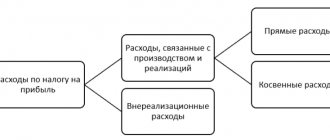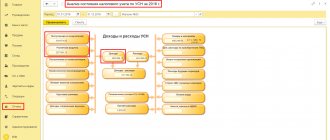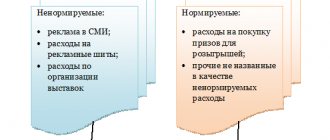In the commercial activities of many manufacturing enterprises, there is such a thing as material costs. It is no secret that manufactured products do not appear out of nowhere. For its production, various materials, raw materials and energy resources are used. Such expenses are included in the balance sheet of the enterprise, and the final cost of manufactured products depends on material costs. Let's try to figure out what material costs are and how such resources are accounted for.
Computer technology
In addition, the cost of purchasing electronic computer equipment can be included in material costs. The organization has the right to determine the procedure for writing off such property independently in its accounting policy for tax purposes (at a time, evenly throughout its service life, etc.) (subclause 3, clause 1, article 254 of the Tax Code of the Russian Federation). However, this rule applies only to organizations operating in the field of information technology. They have the right not to charge depreciation on electronic computer equipment if the following conditions are met:
- at the end of the reporting (tax) period, the share of income from the implementation of computer programs and databases, as well as from the provision of services (performance of work) for their development, adaptation, modification, installation, testing and maintenance is at least 90 percent of the total amount of income. At the same time, at least 70 percent must come from income from foreign entities whose place of business is not the territory of Russia;
- the average number of employees for the reporting (tax) period is at least 50 people;
- The organization has a document on state accreditation in the field of information technology.
This procedure is provided for in paragraph 6 of Article 259 of the Tax Code of the Russian Federation.
Results
An enterprise has the right to make expenses necessary for its activities, which will significantly reduce the actual profit, but not all expenses can be taken into account to determine the tax base.
To properly differentiate them, the accepted accounting methods must be reflected in the accounting policies. You can find more complete information on the topic in ConsultantPlus. Free trial access to the system for 2 days.
Losses from damage and shortages
Situation: what norms of natural loss should be applied when writing off losses from shortages and (or) damage during the storage and transportation of material assets when calculating income tax?
The cost of materials damaged or missing during storage or transportation can be written off as a reduction in taxable profit within the limits of natural loss rates (subclause 2, clause 7, article 254 of the Tax Code of the Russian Federation). These standards are approved by industry departments in the manner established by Decree of the Government of the Russian Federation of November 12, 2002 No. 814. In addition, organizations can use the standards that were approved before the Government of the Russian Federation established this procedure (Article 7 of the Law of June 6 2005 No. 58-FZ). This is confirmed by the letter of the Ministry of Finance of Russia dated January 17, 2011 No. 03-11-11/06.
The list of current norms of natural loss is given in the table.
Situation: is it possible to take into account, when calculating income tax, losses from natural loss for those categories of material assets for which the corresponding norms have not been approved?
No you can not.
The norms of natural loss, within the limits of which the cost of material assets damaged or lost during storage or transportation can be attributed to expenses, are approved by industry departments (Resolution of the Government of the Russian Federation of November 12, 2002 No. 814). In addition, organizations can use standards that were approved before the Government of the Russian Federation adopted this resolution (Article 7 of Law No. 58-FZ of June 6, 2005).
Losses from natural loss for those categories of material assets for which the standards have not been approved at all cannot be taken into account (subparagraph 2, paragraph 7, article 254 of the Tax Code of the Russian Federation). Organizations are not allowed to approve natural attrition rates on their own. This would contradict paragraph 2 of Decree of the Government of the Russian Federation of November 12, 2002 No. 814, which defines the list of ministries and departments authorized to develop such norms.
Similar clarifications are contained in letters of the Ministry of Finance of Russia dated May 23, 2014 No. 03-03-рз/24762, dated January 17, 2011 No. 03-11-11/06, dated July 21, 2010 No. 03-03-06/ 1/471.
Advice : there are arguments that allow, when calculating income tax, to take into account losses from natural loss in the absence of approved norms. They are as follows.
The absence of natural loss norms or their untimely approval by the Government of the Russian Federation should not prevent organizations from applying the provisions of subparagraph 2 of paragraph 7 of Article 254 of the Tax Code of the Russian Federation. Therefore, by the amount of losses from shortages and damage to material assets in the absence (before approval) of natural loss norms, taxable profit can be reduced in the amount of actual costs. The main condition is that such costs must be economically justified, documented and related to activities aimed at generating income (clause 1 of Article 252 of the Tax Code of the Russian Federation).
This point of view is shared by some arbitration courts (see, for example, the rulings of the Supreme Arbitration Court of the Russian Federation dated October 31, 2008 No. 13946/08, dated April 28, 2007 No. 2942/07, the resolution of the Federal Antimonopoly Service of the North-Western District dated July 2, 2008 No. A05-6193/2007).
Costs for components
The Federal Antimonopoly Service of the Moscow District, in Resolution No. KA-A40/2005-10 dated April 27, 2010, recognized the position of the tax authority as justified. In his opinion, the costs of bottles, glue, labels, caps for capping are material costs specified in paragraphs. 4 paragraphs 1 art. 254 of the Tax Code of the Russian Federation, therefore, they are reasonably classified by the tax authority as direct expenses. Referring to State Standards of the Russian Federation R 51149-98 “Products of the wine industry. Packaging, labeling, transportation and storage" and R 52194-2003 "Vodkas and special vodkas. Liquor and vodka products. Packaging, labeling, transportation and storage,” the court concluded that bottles, labels, glue, and caps are products necessary for packaging products and are part of the technical requirements for the preparation of alcoholic products. Judicial and arbitration practice shows that when resolving similar disputes, there is no uniformity in the interpretation and application by courts of paragraphs. 4 paragraphs 1 art. 254 Tax Code of the Russian Federation. The Presidium of the Supreme Arbitration Court of the Russian Federation put an end to the disputes on this issue in Resolution No. 8617/10 dated November 2, 2010, indicating that the technological process for manufacturing alcohol-containing products includes the following stages: receiving alcohol, preparing water, preparing an aqueous-alcohol solution, filtering, processing active carbon, filtration of vodka, adding ingredients and adjusting the strength, control filtration before bottling, bottling, labeling and storage of finished products. Wines, vodkas and other alcoholic beverages are produced bottled in glass bottles with markings and equipped with caps (corks) of the appropriate types. Products take their finished form as a result of sequentially passing through production stages, at each of which the product is supplemented with the necessary components. In finished form, the product is a glass bottle containing the appropriate drink, with a marking (label) applied to it, equipped with a cap or stopper of certain types. Thus, the costs of purchasing materials used for the production of these products are classified as direct costs , named in paragraphs. 1 clause 1 art. 254 Tax Code of the Russian Federation.
Estimating Material Costs
When calculating income tax, take into account purchased materials at actual cost. It includes:
- purchase price under the contract;
- commissions paid to the intermediary;
- import customs duties and taxes;
- transportation costs;
- other costs associated with the acquisition of inventories.
This is stated in paragraph 2 of Article 254 of the Tax Code of the Russian Federation.
In the actual cost of materials, also take into account the cost of non-returnable packaging. The cost of returnable packaging cannot be taken into account when calculating income tax. Therefore, if the price of returnable packaging is included in the total cost of materials, it must be highlighted. The container must be valued at the value that can be obtained from its potential use or sale. For example, from handing over empty boxes to waste paper, from selling empty plastic containers to the public, etc. This procedure for accounting for containers is prescribed in paragraph 3 of Article 254 of the Tax Code of the Russian Federation.
Advice : agree with the supplier so that in the documents he draws up (contract, delivery note, invoice), the cost of returnable packaging is highlighted as a separate line. This will avoid calculations for separating it from the total cost of purchased materials.
When selling materials, value them at the actual cost of acquisition (three methods of writing off the cost of materials do not apply in this case) (subclause 2, clause 1, article 268 of the Tax Code of the Russian Federation).
If an organization uses its own products as raw materials and other materials, evaluate them in the same way as finished products - according to direct costs (Article 319 of the Tax Code of the Russian Federation). Apply a similar procedure to the results of work and services of your own production. This is required by paragraph 4 of Article 254 of the Tax Code of the Russian Federation.
What are material costs
This definition refers to costs that are directly or indirectly involved in the production of goods or the provision of services. These types of material costs include the cost of electricity, the purchase of raw materials, value added tax, and amounts transferred to counterparties.
There can be quite a lot of material costs, but such amounts are invariably reflected in the financial statements of the enterprise. Enterprises determine the list of such expenses independently, depending on the specifics of their professional activities. In accounting, these amounts are reflected in accounts 20 and 29.
Recognition of expenses
The date of recognition of material expenses in the tax base depends on the tax accounting method used by the organization. When using the accrual method, expenses are recognized in the period to which they relate (clause 1, article 272 of the Tax Code of the Russian Federation). The dates of recognition of material expenses when using the accrual method are shown in the table. With the cash method, expenses can be taken into account only after they have actually been paid (clause 3 of Article 273 of the Tax Code of the Russian Federation). The dates of recognition of material expenses when applying the cash method are shown in the table.
When calculating income tax, recognize a number of material expenses in a special manner. Thus, the purchase price of raw materials and materials can be written off as expenses only in the part released into production and used in it at the end of the month (clause 5 of Article 254 of the Tax Code of the Russian Federation). Include (begin to include) the cost of non-depreciable property in expenses only after commissioning (subclause 3, clause 1, article 254 of the Tax Code of the Russian Federation).
In addition, when applying the accrual method, the organization can attribute part of the material costs to direct costs (clause 1 of Article 318 of the Tax Code of the Russian Federation). In this case, take into account the cost of materials in expenses as you sell the products for the production of which they were used (clause 2 of Article 318 of the Tax Code of the Russian Federation). If an organization provides services, then direct costs, as well as indirect ones, can be taken into account at the time of their accrual (paragraph 3, paragraph 2, article 318 of the Tax Code of the Russian Federation).
Situation: when calculating income tax, is it possible to recognize the costs of paying for utility services of the previous period if the documents confirming these costs are received by the organization late? The organization uses the accrual method.
Yes, you can.
When calculating income tax, you can recognize any expenses that meet the criteria established by paragraph 1 of Article 252 of the Tax Code of the Russian Federation. One of these criteria is documentation of costs. Documents confirming the costs of paying for utility services can be acts, invoices, universal transfer documents issued by resource supply organizations, etc.
As a general rule, expenses must be taken into account in the period to which they relate (Clause 1, Article 272 of the Tax Code of the Russian Federation). But what if the documents confirming the provision of utility services were received by the organization late and the accountant has already reported on income tax?
In this case, the declaration is unreliable. Usually, in order to correct an error, you need to submit an updated declaration to the inspectorate. However, there are cases when it is not necessary to draw up an updated declaration. In particular, if an error resulted in an excessive payment of tax, filing an amended return is the right, and not the obligation, of the organization. Such an error can be corrected in the current period, that is, in the month when the supporting documents were received by the organization. This month you need to include the cost of utility services provided as expenses.
Important: if a loss was reflected in the initial declaration, the amount of late confirmed utility expenses cannot be taken into account in the current period. Such an error does not entail excessive payment of tax, so the organization will have to file an amended return, reflecting the increased amount of expenses and the new amount of loss.
This follows from the provisions of paragraph 3 of paragraph 1 of Article 54, paragraph 2 of paragraph 1 of Article 81 of the Tax Code of the Russian Federation. Similar clarifications are contained in letters of the Ministry of Finance of Russia dated January 23, 2012 No. 03-03-06/1/24, dated August 25, 2011 No. 03-03-10/82, dated April 23, 2010 No. 03-02-07 /1-118 and the Federal Tax Service of Russia dated March 11, 2011 No. KE-4-3/3807.
If the documents were received next month, but before the deadline for submitting the declaration, nothing will need to be clarified. Prepare the declaration taking into account the expenses confirmed by these documents. Such clarifications are in the letter of the Ministry of Finance of Russia dated July 27, 2015 No. 03-03-05/42971.
Advice : if documents confirming utility expenses are systematically received late, they can be taken into account as received, without submitting updated declarations. But such a procedure must be provided for in the accounting policy for tax purposes.
As a rule, settlements with resource supply organizations are made monthly. Since utility bills are semi-fixed expenses, the period in which the organization includes them in the calculation of income tax is not of fundamental importance. To avoid constant adjustment of tax liabilities for past periods, the accounting policy for tax purposes should indicate: “periodic expenses for utility services reduce the tax base in the period in which documents confirming their cost are received from the resource supplying organization, but no later than month". If such a record is available, costs for late received documents can be taken into account with a month shift.
Similar explanations were previously given by the Russian Ministry of Finance (letters dated September 6, 2007 No. 03-03-06/1/647 and dated February 22, 2007 No. 03-03-06/1/123).
Ministry of Health budget
Determining all possible direct costs is a budget of direct material costs: it is necessary for the organization to plan activities. Not only economists, but also an accountant take part in budgeting, since in order to determine accurate results it is necessary to calculate not only the balances of materials and other supplies, but also the amount of accounts payable for them and the repayment schedule. Through joint efforts, it is possible not only to draw up a current budget for material costs, but also to calculate it for a certain period of time, which allows us to determine the company’s need for finance for the purchase of materials. Timely financing in the required amount is insurance against production stoppages due to a lack of raw materials.
Methods for writing off raw materials and supplies
When releasing raw materials and supplies into production (drawing up a demand invoice f. M-11), write them off using one of the following methods:
- at the cost of a unit of inventory. The organization evaluates each unit of materials written off for production at its actual cost;
- at average cost. Determine the average cost for each material used as the quotient of dividing the total cost of the type of materials by their quantity;
- at the cost of the first acquisitions (FIFO). That is, materials that are the first to enter production should be valued at the cost of the first acquisitions. In this case, it is necessary to take into account the cost of inventories listed at the beginning of this period. If the amount of materials in the first batch is less than that released for production, then the cost of materials from the second batch is taken into account for calculation, etc.
Fix the selected option in your accounting policy for tax purposes.
These are the provisions of paragraph 8 of Article 254 of the Tax Code of the Russian Federation.
An example of reflection in accounting and taxation of the acquisition and release of materials into production. The organization applies a general taxation system (accrual method). The cost of materials is written off at the cost of a unit of inventory
In November last year, Proizvodstvennaya LLC purchased 5 tons of profile pipes. The cost of materials is 118,000 rubles. (including VAT – 18,000 rubles).
Last December, Master put into production 2 tons of profile pipes. This operation was formalized by a demand invoice. The organization maintains accounting of materials at actual cost (using account 10). When raw materials are released into production, they are assessed in accounting and tax accounting at the cost of a unit of inventory.
The Master's accountant made the following entries in the accounts.
In November:
Debit 10 Credit 60 – 100,000 rub. (RUB 118,000 – RUB 18,000) – 5 tons of profile pipes were capitalized;
Debit 19 Credit 60 – 18,000 rub. – VAT is taken into account on the purchase price;
Debit 60 Credit 51 – 118,000 rub. – the purchase has been paid to the supplier;
Debit 68 subaccount “Calculations for VAT” Credit 19 – 18,000 rub. – accepted for deduction of VAT on purchased pipes.
December:
Debit 20 Credit 10 – 40,000 rub. (RUB 100,000: 5 t × 2 t) – 2 tons of profile pipes were released into production.
“Master” maintains tax accounting using the accrual method. In the accounting policy of the organization, material costs are listed in the list of direct costs. Products in the production of which pipes were used were sold in January of this year. When calculating income tax for January of the current year, the “Master” accountant took into account the cost of materials used in production - 40,000 rubles. (RUB 100,000: 5 t × 2 t).
Calculation of the profitability formula
Since MH directly affects the cost of production, and therefore the profitability of the organization, it is necessary to analyze and calculate coefficients for them. Most often, this is done not by accountants, but by economists. They calculate profit per ruble of the Ministry of Health. The material cost formula used by experts uses the following data:
- PMZ - profit per 1 ruble of the MS of a specific product;
- P - profit from the sale of these products;
- MH - for sold products.
The formula looks like this:
PMZ = P / MZ.
The obtained result makes it possible to calculate the profitability of production, that is, find out how much you can earn from each ruble spent or, conversely, lose (which is extremely undesirable).
In addition, the so-called total material intensity is determined, which is calculated as the ratio of the MH to the total amount of expenses incurred for the production of goods. This value shows the share of MH in the total cost of production. But it should be remembered that other costs also have an impact on the cost, and therefore on profitability: maintenance of the administrative apparatus, transport, etc.
Reducing material costs
Reduce the amount of material costs:
- on the value of the balances of inventories transferred to production, but not used in it at the end of the month;
- on the cost of returnable waste.
These are the requirements of paragraphs 5 and 6 of Article 254 of the Tax Code of the Russian Federation.
You can determine the cost of remaining materials transferred to production, but not used in it at the end of the month, on the basis of an independently developed calculation. There is no unified form for it. The assessment of balances must correspond to their assessment upon write-off (clause 5 of Article 254 of the Tax Code of the Russian Federation).
Please take into account returnable waste at the time of delivery to the warehouse (drawing up the requirement-invoice f. M-11). The way in which returnable waste is assessed depends on who will subsequently dispose of it. An organization can:
- use them yourself (for example, in main or auxiliary production);
- sell.
In the first case, evaluate such waste at a reduced price of the source material (at the price of possible use) (subclause 1, clause 6, article 254 of the Tax Code of the Russian Federation). Develop a specific cost calculation method yourself based on the specifics of production. It must be approved as an annex to the accounting policy for tax purposes.
When selling returnable waste in tax accounting, evaluate it at their sales price, taking into account current market prices (subclause 2, clause 6, article 254 of the Tax Code of the Russian Federation, letter of the Ministry of Finance of Russia dated April 26, 2010 No. 03-03-06/4/49) .
An example of reflection in accounting and taxation of returnable waste. The organization applies a general taxation system
In January of this year, Proizvodstvennaya LLC transferred 25 tons of soybeans to production at a price of 16,000 rubles/t for a total amount of 400,000 rubles. (RUB 16,000/t × 25 t). Returnable waste from production (feed meal) amounted to 300 kg. They will be used in auxiliary production. Therefore, returnable waste in tax accounting is valued at the price of possible use. For soybeans it is 10 rubles/kg.
For accounting purposes, Master's accounting policy also sets out the procedure for assessing returnable waste at the price of its possible use.
The Master's accountant made the following accounting entries:
Debit 20 Credit 10 – 400,000 rub. – raw materials were transferred to production;
Debit 10 Credit 20 – 3000 rub. (300 kg × 10 rub./kg) – returnable waste is capitalized on the basis of the invoice requirement.
When calculating income tax, Master's accountant reduced material costs by the cost of returnable waste - 3,000 rubles.
Accounting for material costs in the balance sheet
If you look at the reporting form, the material costs line is missing here. However, other accounts are used to calculate such expenses.
| Account number | Expense item |
| 20 | Main production costs |
| 21 | Semi-finished products accounting line |
| 23 | Auxiliary production costs |
| 25 (26) | Costs for general production and business processes |
| 29 | Service accounts |
Here it is necessary to clarify that according to accounting rules, accounts with indexes 25 and 26 cannot create a balance, therefore they are closed according to the financial result of each reporting period. Therefore, formulas for calculating material costs are built on the basis of the remaining accounts indicated in the table. In the assets section, inventories for material costs are reflected in line 1210.
Increase in material costs
If certain conditions are met, the organization can increase the amount of material expenses of the reporting (tax) period by the cost of:
- surpluses identified during the inventory;
- materials received in the process of liquidation (complete or partial), repair, modernization, reconstruction or technical re-equipment of fixed assets;
- materials received free of charge.
These conditions are as follows. Firstly, the listed assets must be included in non-operating income. Secondly, the cost at which they were included in income must correspond to the market level. And thirdly, the market value of these assets can be written off as expenses only upon their disposal (sale, transfer to production, etc.).
This procedure follows from the provisions of paragraphs 5 and 6 of Article 274, paragraphs 8, 13, 20 of Article 250 and paragraph 2 of paragraph 2 of Article 254 of the Tax Code of the Russian Federation.
The cost of surplus and materials received in the process of liquidation, repair, modernization, reconstruction, technical re-equipment of fixed assets should be included in material costs at the time of their release into production (clause 2 of Article 272, subclause 1 of clause 3 of Article 273 of the Tax Code RF). If in the future the organization uses these materials for repairs, then recognize their cost not in material costs, but in the costs of repairing fixed assets (Article 260 of the Tax Code of the Russian Federation).
The cost of materials received in the process of liquidation (repair, modernization, reconstruction, technical re-equipment) of property that does not belong to fixed assets will not reduce taxable profit. Regardless of how these materials will be used in the future. This is explained by the fact that the organization does not have expenses for the acquisition of property that could be taken into account when determining the cost of such materials. This conclusion follows from paragraph 2 of paragraph 2 of Article 254 of the Tax Code of the Russian Federation and letters of the Ministry of Finance of Russia dated October 21, 2009 No. 03-03-05/188 and the Federal Tax Service of Russia dated November 23, 2009 No. 3-2-13/227.
An example of reflection in accounting and taxation of materials received from the dismantling of fixed assets. The organization applies a general taxation system
In January of this year, Proizvodstvennaya LLC dismantled with its own resources a metal-cutting machine damaged in a fire. The market value of the materials remaining after dismantling was 5,000 rubles. These materials were used in the same month to repair other machines.
The following entries were made in the Master's accounting:
Debit 10 Credit 91-1 – 5000 rub. – materials remaining after dismantling the machine are reflected at market value;
Debit 25 Credit 10 – 5000 rub. – materials are written off for machine repair costs.
In tax accounting, the accountant reflected the market value of materials in non-operating income - 5,000 rubles. Materials were written off for machine repair costs at their full market value (RUB 5,000).
Ways to reduce material costs
Such expenses usually amount to 50-60% of the cost of finished products.
Therefore, all manufacturing companies are interested in reducing such costs. During the operation of such enterprises in market conditions, a certain strategy was developed aimed at reducing production costs. These include the following decisions:
- Introduction of modern technologies aimed at waste-free production;
- Use of innovative materials;
- Optimization of production processes;
- Encouraging employees to use enterprise resources more carefully;
- Do not neglect scientific research in the manufacturing industry;
- Effective use of production waste.
The assessment of the efficiency of using material costs is determined by the method of substituting economic indicators. Let's assume that a company is engaged in the production of woodworking machines. Component parts are also produced by the structural division of this company. However, among competitors, such parts are 30% cheaper. In such a situation, it is more profitable to liquidate an unprofitable structural division and buy components from other manufacturers. Transport costs are also taken into account according to a similar scheme.
In addition, material costs for production can be reduced by reducing the number of defects and increasing the volume of products.
Formation of trade organization costs
Any commercial organization, in the course of its activities, incurs certain expenses. For example, this includes the maintenance of premises, utility bills, staff wages, unified social tax, and so on.
Trade organizations are no exception. Expenses incurred by trading organizations in the process of carrying out their activities in addition to paying for the cost of purchased goods form production costs, which in trade are called distribution costs.
The main objectives of accounting for distribution costs of trade organizations are to ensure timely, complete and reliable reflection of actual expenses and control over the use of material and financial resources.
Until the entry into force of Chapter 25 “organizational profit tax” of the Tax Code of the Russian Federation (hereinafter referred to as the Tax Code of the Russian Federation), organizations determined the composition of costs based on the famous Regulation on the composition of costs, approved by Decree of the Government of the Russian Federation of August 5, 1992 No. 552 and developed based on it, industry guidelines. There were the following industry recommendations on cost accounting for trade organizations: - Methodological recommendations on accounting of costs included in distribution and production costs, and financial results at trade and public catering enterprises, approved by Roskomtorg and the Ministry of Finance of the Russian Federation dated April 20, 1995 No. 1 -550/32-2.








